1983 – WSXT ALETTA ROSSA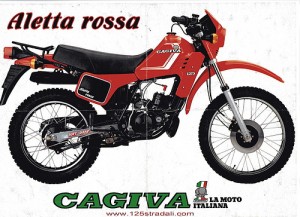
Presentata e commercializzata a partire dal 1983, la Cagiva WSXT, meglio conosciuta come Aletta Rossa, è un enduro tecnicamente ben dotata, ben rifinita e dotata di una linea, per i tempi, molto modaiola che fa subito breccia tra i cuori di molti sedicenni. La Aletta Rossa conosce un successo di vendite straordinario tanto da […]
1984 – ELEFANT 125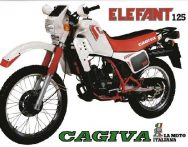
Nel 1984 Cagiva affianca alla Aletta Rossa la nuova Elefant 125, ovvero una nuova tipologia di enduro che prende ispirazione dalle moto impiegate nelle massacrante Parigi-Dakar, dove la casa di Schiranna coglie molti successi. La Elefant convive in listino assieme alla Aletta Rossa con la quale condivide la medesima ciclistica e propulsore.[…]
1985 – ELEFANT 2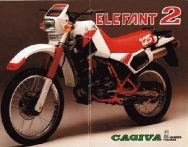
Nell’estate del 1985 Cagiva presenta la Elefant 2, una enduro ispirata alla precedente Elefant, ma dotata di consistenti aggiornamenti alla carrozzeria, alla ciclistica ed al propulsore che risulta molto più prestante del precedente. A differenza di Aprilia e Gilera che offrono in listino una enduro base affiancata a versioni “africane” e “rally”, a Schirananna […]
1986 – ELEFANT 3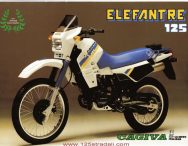
Nell’estate del 1986 esce l’ultimo capitolo della saga Elefant, ovvero la Elefantre. Sebbene condivida l’impostazione di base con la precedente versione, la nuova Elefant risulta aggiornata non solo nella carrozzeria, ma anche nella ciclistica e nel propulsore che ora adotta l’avviamento elettrico di serie. La Elefantre mantiene sempre un’impostazione di guida piuttosto stradale, ma […]
1987 – CRUISER 125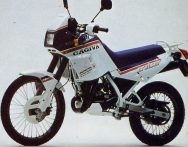
Presentata e commercializzata nel Luglio 1987, la nuova Cruiser prende il posto della precedente Elefantre. Rispetto alla serie Elefant, la Cruiser ha un’impostazione di guida più votata alla guida nel fuoristrada. La posizione di guida consente infatti di caricare maggiormente l’avantreno e le sospensioni offrono una maggiore escursione più adatta alla guida sugli sterrati. […]
1988 – TAMANACO 125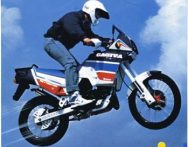
Presentata nel Giugno 1988, la nuova enduro Cagiva prede il nome da una tribù india del sud-america particolarmente aggressiva: i Tamanaco. Come per la precedente Cruiser, con la quale condivide il telaio,la Tamanacomantiene un’impostazione di guida più votata al fuoristrada rispetto alla precedente generazione Elefant. Rispetto alla Cruiser le sovrastrutture sono completamente nuove e […]
1990 – N 90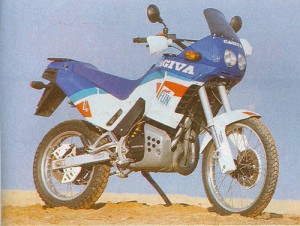
Presentata al Salone di Milano del Novembre 1989, la nuova N 90 prende il posto della Tamanaco, forse adottando un nome meno originale, ma che chiaramente omaggia gli anni 90 che di li a poco verranno. La carrozzeria è tutta nuova. Rispetto alle precedenti Cruiser e Tamanaco,la N 90 offre una guida che predilige […]
1990 – K7 125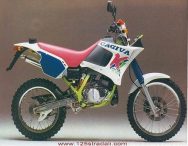
Presentata nel 1990, la K7 è una novità vera per Cagiva che rinnova la sua gamma enduro presentando una moto diversa da quanto visto fino ad ora. La K7 si differenzia dalla N 90, rispetto alla quale adotta un’impostazione più adatta ad una enduro professionale, ma anche da tutte le altre concorrenti, […]
1991 – W8 125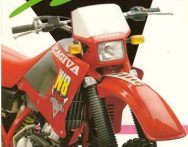
Presentata nel 1991, la W8 è parte di una nuova famiglia di enduro composta dalla W4 di 50cc e dalle quattro tempi W12 e W16 rispettivamente di 350cc e 600cc. L’erede della K7 ha una linea decisamente più convenzionale rispetto alla sua progenitrice che non riscontra molto successo con il pubblico. La W8 adotta infatti una […]
1991 – SUPERCITY 125
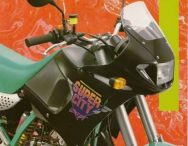
Presentata al Motorshow di Bologna del 1990 e commercializzata dall’ Aprile 1991,la Supercity 125 è la risposta di Cagiva nel settore delle funbikes, inaugurato nel lontano 1987 dalla Gilera con l’antesignana Fastbike. La Supercity rappresenta l’anello di congiunzione tra la sportivissima Mito e la enduro K7. Con una linea moderna caratterizzata da un aggressivo cupolino e […]
